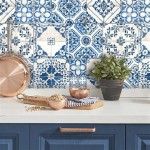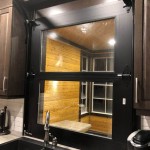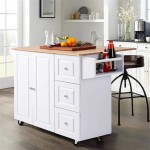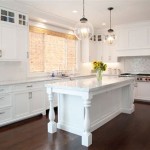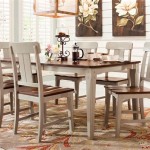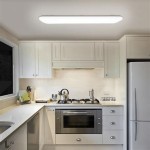Where To Place Kitchen Cabinet Knobs: A Comprehensive Guide
Kitchen cabinets are a critical element of any kitchen design, providing essential storage space and contributing significantly to the overall aesthetic. The placement of hardware, specifically knobs, on these cabinets can profoundly impact both the functionality and the visual appeal of the space. While seemingly a minor detail, the deliberate and informed positioning of kitchen cabinet knobs makes a significant difference. This article explores the factors to consider when deciding where to place kitchen cabinet knobs, offering guidance on achieving optimal functionality and visual harmony.
The placement of cabinet knobs is not governed by a single, universally applicable rule. Numerous factors influence the ideal location, including the cabinet style (e.g., shaker, slab), the door dimensions, the desired aesthetic (e.g., traditional, modern), and personal preferences regarding ease of use. A careful analysis of these factors is crucial to make informed decisions about knob placement.
Before drilling any holes, it is prudent to conduct a mock-up. Use painter's tape to temporarily affix knobs in various positions and assess their appearance and feel from different angles and distances. Take into account how the knob placement interacts with the overall kitchen layout, including the placement of adjacent appliances and countertops. Taking the time to mock-up the placement can prevent costly mistakes and ensure satisfaction with the final result.
Considering Cabinet Door Style and Size
The style of the cabinet door plays a pivotal role in determining the appropriate knob placement. For traditional cabinet doors, such as those with raised panels or intricate detailing, a more ornate knob might be chosen, and its placement typically reflects the design elements of the door. Conversely, for minimalist and modern slab-style doors, a simpler knob and a more streamlined placement are often preferred.
Door size also influences the placement decision. On smaller cabinet doors, a knob placed centrally might be aesthetically pleasing and functionally sound. However, on larger and heavier doors, placing the knob further away from the hinge side can provide better leverage, making it easier to open the door. This is particularly important for frequently used cabinets. For very tall cabinets, two knobs may even be considered to further assist with balance and ease of opening.
The placement on shaker style doors is often in the center of the recessed panel. However, some prefer to place the knob on the frame near the recessed panel. The best location will depend on the overall aesthetic and the size of the door.
When dealing with corner cabinets, particularly those with angled doors, special consideration is needed. The knob placement must allow for easy access and avoid collisions with adjacent cabinets or appliances. Experimentation with different positions is recommended to find the optimal balance between functionality and aesthetics.
Accounting for Functionality and Ergonomics
Aesthetically pleasing knob placement is essential, but functionality is paramount. The primary purpose of a cabinet knob is to facilitate the easy opening and closing of the door. Therefore, the chosen placement should be ergonomically sound and comfortable for the user.
Consider the height of the individuals who will be using the kitchen most frequently. Placement that is too high or too low might place strain on the user’s wrist or back. A comfortable reach should be the guiding principle, even if it requires deviating slightly from a purely aesthetic ideal. A general guideline is to place knobs at a height that falls between the elbow and shoulder of the primary user. This can also be adjusted slightly higher for upper cabinets and slightly lower for lower cabinets to account for the angle of reach.
The weight of the cabinet door is also a factor. Heavier doors require more leverage, so placing the knob further from the hinge can significantly improve ease of use. This is particularly important for base cabinets where bending and reaching are required.
In kitchens designed for accessibility, knob placement becomes even more critical. Adhering to ADA (Americans with Disabilities Act) guidelines is essential to ensure that cabinets are easily accessible to individuals with disabilities. These guidelines typically specify height and reach ranges for cabinet hardware.
Establishing Consistent Placement and Visual Balance
Consistency in knob placement throughout the kitchen is crucial for maintaining visual harmony and creating a cohesive design. While minor variations may be necessary to accommodate specific conditions, adhering to a general standard helps to unify the overall look of the kitchen.
A common approach to achieving consistency is to establish a reference point. For example, on upper cabinets, knobs can be consistently positioned a specific distance from the bottom corner of the door. On lower cabinets, a similar measurement from the top corner can be used. This approach ensures that knobs are aligned and creates a sense of order.
The size and style of the knobs themselves also contribute to visual balance. Using knobs that are appropriately scaled to the size of the cabinet doors is important. Small knobs on large doors can appear disproportionate, while oversized knobs on small doors can be overwhelming. Consider the overall style of the kitchen when selecting knobs, ensuring that they complement the cabinets, countertops, and appliances.
When mixing knob and pull hardware, thoughtful placement is essential. Typically, knobs are used on smaller, lighter doors while pulls are used on larger, heavier doors or drawers. The placements should complement each other and follow a consistent pattern throughout the kitchen. The visual weight of the hardware should be balanced across the different cabinet types.
Don't forget to consider the impact of lighting on the appearance of the knobs. The way light reflects off the knobs can significantly affect their visual prominence. For example, polished metal knobs can create bright highlights, while matte finishes can have a more subdued effect. Consider the lighting conditions in the kitchen and the desired level of reflectivity when selecting knobs and determining their placement.
The color and material of the knobs also contribute to visual balance. Contrasting colors can create a striking visual effect, while similar colors can create a more subtle and integrated look. The material of the knobs should also complement the other materials in the kitchen, such as the countertops, backsplash, and flooring.
Ultimately, the "correct" placement of kitchen cabinet knobs is subjective and depends on a variety of factors, including personal preferences, budget, and functional requirements. However, by considering these guidelines, it is possible to achieve knob placement that is both aesthetically pleasing and functionally effective, thereby elevating the overall design of the kitchen.
Before making any permanent changes, it is best practice to consult with a professional kitchen designer or contractor. These professionals have extensive experience with cabinet hardware placement and can provide valuable insights and recommendations tailored to the specific needs of the project.
Careful consideration of all these aspects of knob placement helps create a kitchen that is both beautiful and functional. A kitchen where the small details are carefully thought out and executed creates a harmonious space that can be enjoyed for many years.

Learn How To Place Kitchen Cabinet Knobs And Pulls Cliqstudios

How To Place Cabinet Knobs Pulls

Where To Put Knobs And Handles On Kitchen Cabinets

A Simple Guide For Cabinet Knob Placement Julie Blanner

How To Place Cabinet Knobs Pulls

How To Place Cabinet Knobs Pulls

The Ultimate Guide For Cabinet Hardware Placement And Sizing Kitchen Inspiration Design

Learn How To Place Kitchen Cabinet Knobs And Pulls Cliqstudios

Cabinet Hardware Placement Tips Bkc Kitchen And Bath
Cabinet Hardware Placement Where To Put Knobs And Handles Vevano

